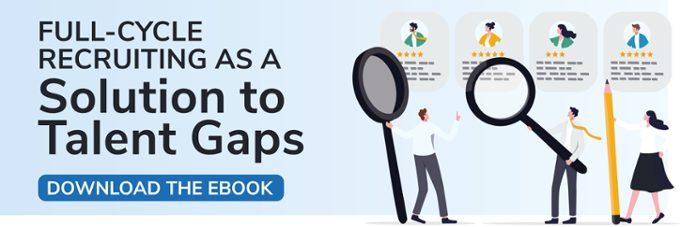Topic Outsourcing HR / PEO,
7 Best Practices for Effective Employee Offboarding

July 17, 2025 | By Questco Companies

Offboarding is the final stage of the employee lifecycle. When handled well, it protects your organization, strengthens your brand, and builds lasting goodwill. While often overlooked, this phase is critical in risk management, culture, and long-term talent strategy.
Without a structured offboarding process, companies expose themselves to data security breaches, reputation damage, and lost institutional knowledge. By contrast, thoughtful offboarding ensures a smooth transition for all parties—and creates opportunities for lasting value, even after an employee departs.
Best Practices to Offboard Employees
1. Treat Departing Employees with Respect
How a company treats employees at the point of departure reflects its values and influences its employer brand. A respectful, appreciative offboarding experience leaves a positive impression that influences internal morale, alumni engagement, and future talent.
Simple gestures—such as a personalized thank-you note, a small farewell event, or a token of appreciation—can signal that you value people, not just their output. These efforts also show current employees that their contributions are recognized and appreciated, even as they leave.
Structured tools, such as farewell programs or alumni networks, can help formalize these practices and extend goodwill beyond the final day.
2. Understand and Communicate the Reason for Departure
Knowing why an employee is leaving—whether by choice or not—is key to improving retention and shaping future hiring. Differentiating between voluntary resignations and involuntary terminations provides insights into workplace satisfaction, leadership effectiveness, and cultural alignment.
Exit surveys can categorize departure reasons, from career advancement to dissatisfaction with management. These insights are only useful if handled transparently. When appropriate, communicating an employee’s departure internally—with their consent—can prevent misinformation and preserve trust.
Clear communication protects the departing employee’s dignity and supports a stable, well-informed workplace.
3. Secure Company Assets and Data
Effective offboarding includes retrieving physical assets and protecting digital infrastructure. Every departing employee should be guided through a structured checklist to return devices, access cards, or other equipment.
But asset recovery goes beyond hardware. Promptly revoking system access and resetting credentials helps safeguard sensitive information, including email accounts, internal databases, communication platforms, and third-party tools.
Organizations should use offboarding software or documented protocols to avoid gaps that address all access points. Revisiting signed agreements, like NDAs, reinforces expectations and strengthens legal protections.
4. Conduct Exit Interviews to Learn and Improve
Exit interviews offer a final opportunity to gather candid feedback from employees. When conducted with clear intent, they reveal patterns and pain points that leadership may otherwise miss.
Beyond simply asking why someone is leaving, exit interviews should explore their experience with management, culture, growth opportunities, and support. This qualitative feedback is often more valuable than survey data alone.
Structured debriefs can translate individual insights into actionable improvements, helping HR teams and managers refine their strategies and address recurring challenges.
5. Ensure a Smooth Transition Through Knowledge Transfer
Losing an employee often means losing valuable institutional knowledge—unless a transition plan exists. Knowledge transfer should be part of every offboarding process to maintain continuity and minimize disruption.
Departing employees should be asked to document their workflows, responsibilities, and key contacts. Tools may include written SOPs, training videos, or live walkthroughs for their successor.
Proactive handoff meetings ensure successors understand role expectations and open questions can be resolved before the final day. In some cases, succession planning or temporary role shadowing can further support operational stability.
6. Handle Benefits and Final Pay with Clarity
Final pay, benefits, and outstanding leave should be addressed accurately and carefully. Confusion around COBRA, unused PTO, or 401(k) rollover options can sour an otherwise positive departure.
HR should provide departing employees with a clear summary of:
- Final paycheck timing and breakdown
- Health insurance and benefits continuation
- Retirement account options and required forms
- Any applicable severance or bonus payouts
Offering a brief benefits consultation or final HR meeting helps close the loop and ensures employees leave with clarity and appreciation.
7. Maintain Post-Departure Relationships
Maintaining contact with former employees turns a goodbye into a long-term opportunity. Former team members can become brand advocates, referral sources, or future hires.
Creating an employee alumni network keeps the door open. This could include newsletters, invite-only groups, or occasional events. Strong alumni networks strengthen your brand and reinforce a sense of belonging, even after someone leaves the organization.
Employees who feel valued at exit are likelier to speak positively about their time with your company and recommend others to join.
Offboarding as a Strategic Investment
Effective offboarding is more than an administrative task—it invests in your reputation, culture, and future talent pipeline. Just as onboarding sets the tone for success, offboarding shapes how employees remember you and how others perceive you.
By focusing on respect, communication, knowledge transfer, and benefits clarity, organizations reduce risk and reinforce trust. Post-departure engagement further extends this value, creating a lasting connection with those who helped build your business.
A strong offboarding process doesn’t just manage exits—it creates a legacy.
Want support improving your offboarding experience? Let’s start a conversation.



